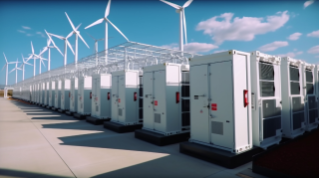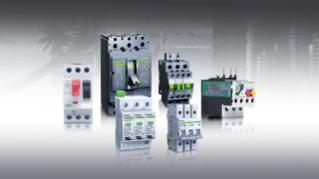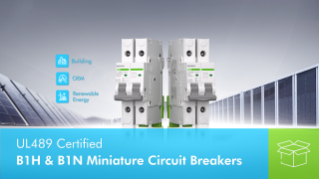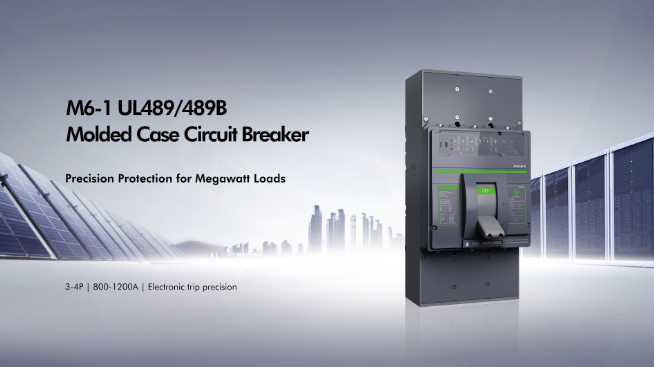Introduction
Energy storage systems are a crucial enabler of the renewable energy transition. Due to the growth of renewable energy generation, the need for flexible, large-capacity storage can stabilize energy supply and demand. Battery Energy Storage Systems enable power reliability and resilience across industrial and grid-level applications.
Why the Grid Needs Energy Storage Systems
Due to the integration of renewable energy sources and grid modernization, the demand for energy storage systems is growing. The growth in renewable power exemplifies this, as renewables account for the largest share of growth when it comes to energy sources at 38%. It is also predicted that energy storage system markets will grow by 35% in 2025. The biggest contributors to the market are China and the United States, with other industrial companies following the renewable energy storage trend.
In terms of grid decarbonization, energy storage systems are an avenue towards more sustainable energy. With many countries looking to decarbonize, the demand for energy storage systems is growing.
With the growing demand for power storage solutions, battery-based solutions, especially utility-scale systems, are reshaping power infrastructures. Battery energy storage systems are allowing industries to have back-up power in case of power outages while also contributing to growing decarbonization, further improving sustainability. BESS also allows for less grid dependence despite growing energy demands.
How Battery Energy Storage Systems Work
A BESS unit operates perfectly within utility and industrial environments. Energy storage systems are great for storing power and distributing it with speed and efficiency across different circuits and machines. They are also great for high-voltage transmission and transformation. Through this transformation, BESS units are capable of low-voltage distribution, which is conducted through substations.
All of these are possible due to the core structure of a BESS. A BESS contains battery cells, BMS, a power conversion system (PCS), and an energy management system (EMS). They also have fire suppression and protection subsystems that make them reliable for heavy-load usage. They can also withstand high temperatures due to their fire suppression or cooling system.
A lithium-ion BESS stores electrical energy as chemical energy and allows operators to discharge it on demand. A BESS conducts several charge and discharge cycles per day, with it storing energy as the charge, and the discharge comes from releasing the stored energy or capacity into the system. To measure the efficiency of a BESS cycle, the round-trip efficiency metric measures the amount of discharged energy compared to the amount used to charge it. Efficient BESS benefit from higher RTE scores and often improve scalability.
Advantages of Utility-Scale Battery Energy Storage Systems
Grid Stability and Flexibility
A large-capacity BESS unit provides instantaneous frequency response and voltage stabilization. The instantaneous frequency response of renewable energy storage systems enables power to be distributed and absorbed within milliseconds, thereby improving grid stability and meeting urgent energy demands.
These are great features that help balance energy fluctuations from renewable energy sources. These attributes allow for improved system reliability, making them ideal for utility- or industrial-scale applications.
These features prevent mishaps from occurring during high-load operations and protect machines from potential energy-related issues.
Renewable Integration and Peak Management
A battery energy storage system supports renewable energy storage systems. This is possible by storing surplus energy from sustainable sources such as solar or wind. This is great if you want your operations to be more sustainable, and it also allows you to conduct time-shifting. Time-shifting is the act of discharging stored energy during demand peaks. This optimizes and lowers energy costs.
As you are using surplus renewable energy, your dependence on the electric grid during high-demand periods allows you to save on electricity bills.
Modular Scalability and Safety
A BESS’s modular design is perfect for scalable capacity expansion and simplified installation. This is because a BESS features smart fire suppression, advanced thermal control, and intelligent EMS. These features allow BESS units to function properly despite increasing loads and demands. They also protect operators and other components within a system with their features.
An example of a highly reliable BESS is CHINT’s Utility-Scale Power Storage Solution. This product features a modular containerized design, efficient cooling, active fire protection, and an integrated digital monitoring screen for maximum reliability and safety.
Learn more about CHINT’s Utility-Scale Power Storage Solution here.
Designing Reliable and Efficient Energy Storage Systems
BESS units have key principles when it comes to design and integration. These are capacity requirements, the correct battery type, and system integration. Capacity requirements depend on usage patterns, load profile, and peak demand. Properly implementing these will allow a BESS to handle high amounts of load during operations.
The next principle is selecting the correct battery type. Batteries are made differently, each type having its own set of advantages and disadvantages. The popular choice for batteries if you need stability, reliability, and long life is lithium-ion. Lastly, effective system integration allows for better functionality, and the compatibility with other components prevents the system from encountering issues.
The system design should also adhere to local grid codes and safety standards. These standards include IEC 62933, UL 9540, and GB/T 36276. Adhering to local grid codes and safety standards will give your operation reliability when it comes to protecting operators, machines, and nearby areas. You can also integrate switchgears, transformers, and power conversion systems to optimize your BESS unit’s performance and minimize losses.
Another important factor to consider with your BESS is lifecycle management. Make sure that the cell chemistry selection is conducted correctly and system control functionalities are taken care of. Making these necessary steps will allow you to maximize your BESS unit’s lifecycle and make sure that it performs well even during its lifecycle’s latter stages.
An example of prolonging a BESS unit’s lifecycle is through the use of CHINT’s ecosystems, which combine transformers, switchgear, EMS functionality, and SCADA for turnkey project delivery. CHINT ecosystems will allow your BESS to run in optimal conditions and will make sure that it stays efficient even after years of continuous use.
The Future of Renewable Energy Storage Systems
BESS technology will further push the trend of using sustainable energy sources rather than relying on fossil fuels. With the world transitioning to adopting more sources of renewable energy, commercial energy storage systems have become more popular, especially for large-scale operations that have high demands.
Long-duration storage options will expand renewable integration and backup capabilities. These will allow your systems to accommodate more sources of renewable energy as well as provide better energy distribution during outages.
With the integration of AI technologies, predictive analytics, and AI-based control, the performance of your BESS can be improved. These attributes will also make operating your BESS safer for your workers.
Lastly, grid-forming inverters and hybrid solar-plus-storage configurations will become the standard for modern grids. Making BESS a highly-demanded commodity, especially those that can provide utility and industry-scale capabilities.
Energy storage systems allow for more sustainability for operators and provide a way to save up on electricity costs, especially during load peaks. They also futureproof your systems and allow for integration with different sources of renewable energy.
Conclusion
Battery energy storage systems strengthen modern grids by improving reliability, enabling renewable integration, and reducing operating costs. An example of this is CHINT Global’s Utility-Scale Power Storage Solution that features a modular design, safety features, and smart control functionalities. These attributes will define the next generations of sustainable and efficient power infrastructures.
Contact CHINT Global today to request a quote on BESS units and installation.







.jpeg)

.jpeg)


.png)


